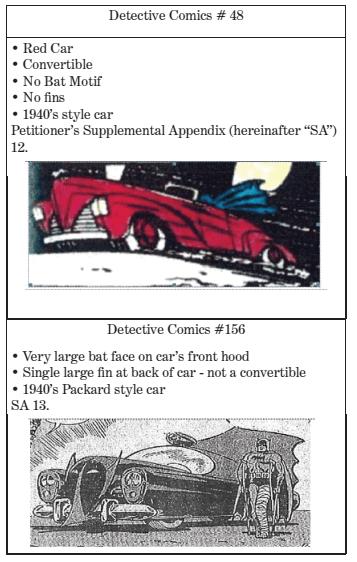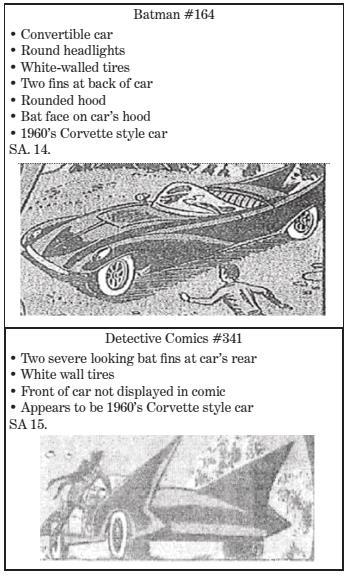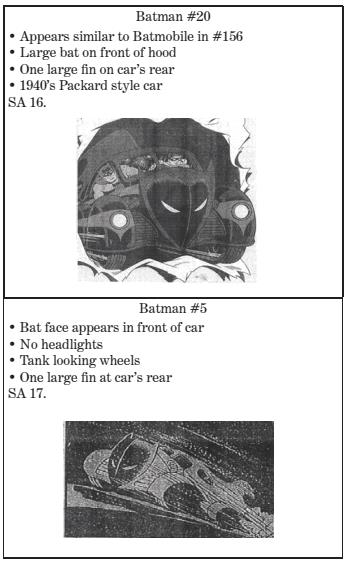There are two main reasons for concern. First, the scope of copyright protection afforded to ‘characters’ appears to have been extended. Secondly, a specific copyright exception appears to have been carved out for automobile designs, which are typically excluded from copyright protection in the US.
In January 2016, Towle by his counsel filed a petition for certiorari (also known as a writ seeking judicial review) with the US Supreme Court. In particular, Towle asked the US Supreme Court to consider three questions:[3]
- Whether a court may judicially create a subject of copyright that was specifically and expressly excluded by Congress as such when Congress enacted The Copyright Act, thus circumventing the clear mandate of Congress and the U.S. Copyright Office.
Towle argued that the design of an automobile, like the design of any other useful item, is not eligible for copyright protection by virtue of section 101 of the Copyright Act. The US Copyright Office has affirmed that position in its own mandate, which the 9th Circuit Court of Appeals failed to recognise.[4]
That argument appears attractive at first glance, although the 9th Circuit Court of Appeals in 2008 already set a precedent extending copyright protection to automobile characters in certain circumstances.[5]
- Whether an automobile that does not display any personality traits or any consistent and widely-identifiable physical attributes can be separately protected by copyright as a “character”.
Towle’s petition sets out a detailed history of the Batmobile complete with images, in an attempt to show just how differently the Batmobile has been portrayed over the years. This point was also made in our original article in October 2015.[6]
Towle counts over 100 variations of the Batmobile in the comic books alone, many of which do not include any “bat-like” appearance. Some of the designs identified in the petition are reproduced below.
Towle therefore concludes that the 9th Circuit Court of Appeals has improperly extended the scope of copyright protection on the facts of the case, in a decision that could have dramatic and pervasive consequences.
- Whether a determination of substantial similarity of protected expression must be made in a copyright case, independent of proof of copying.
Lastly, Towle argued that the 9th Circuit Court of Appeals failed to determine whether Towle copied any protectable expression. In particular, the Court should have analysed whether the works in question were substantially similar.
On our reading of the original decision, this question did not require any detailed analysis because Towle admitted to copying the specific designs of the Batmobile in question. Towle’s argument at first instance was that the Batmobile did not attract copyright protection at all.
On 7 March 2016, the US Supreme Court denied certiorari, and in doing so refused to review the 9th Circuit Court of Appeals’ decision.
The Batmobile therefore remains a copyright character, despite its change in appearance over the years. The 9th Circuit Court of Appeals’ decision is a precedent to watch out for in future copyright cases. While Towle and many commentators have suggested that the decision will have dramatic consequences, copyright cases are typically very fact specific. It is quite possible that the decision will not be widely used as a precedent.
Examples of Batmobile designs identified in Towle’s petition:



[1] DC Comics v. Mark Towle, no. 13-55484 F.3d (9th Cir. 2015)
[2] https://zernerlaw.wordpress.com/2016/01/23/driving-the-batmobile-straight-to-the-supreme-court/
[3] https://www.documentcloud.org/documents/2696841-Petition-for-Writ-Towle-v-DC-Comics.html
[4] http://www.copyright.gov/register/va-useful.html
[5] Halicki Films, LLC v. Sanderson Sales & Mktg., 547 F.3d 1213, 1224 (9th Cir. 2008) at 1224
[6] https://www.baldwins.com/news/to-the-batmobile-lets-go-a-review-of-copyrightable-subject-matter
